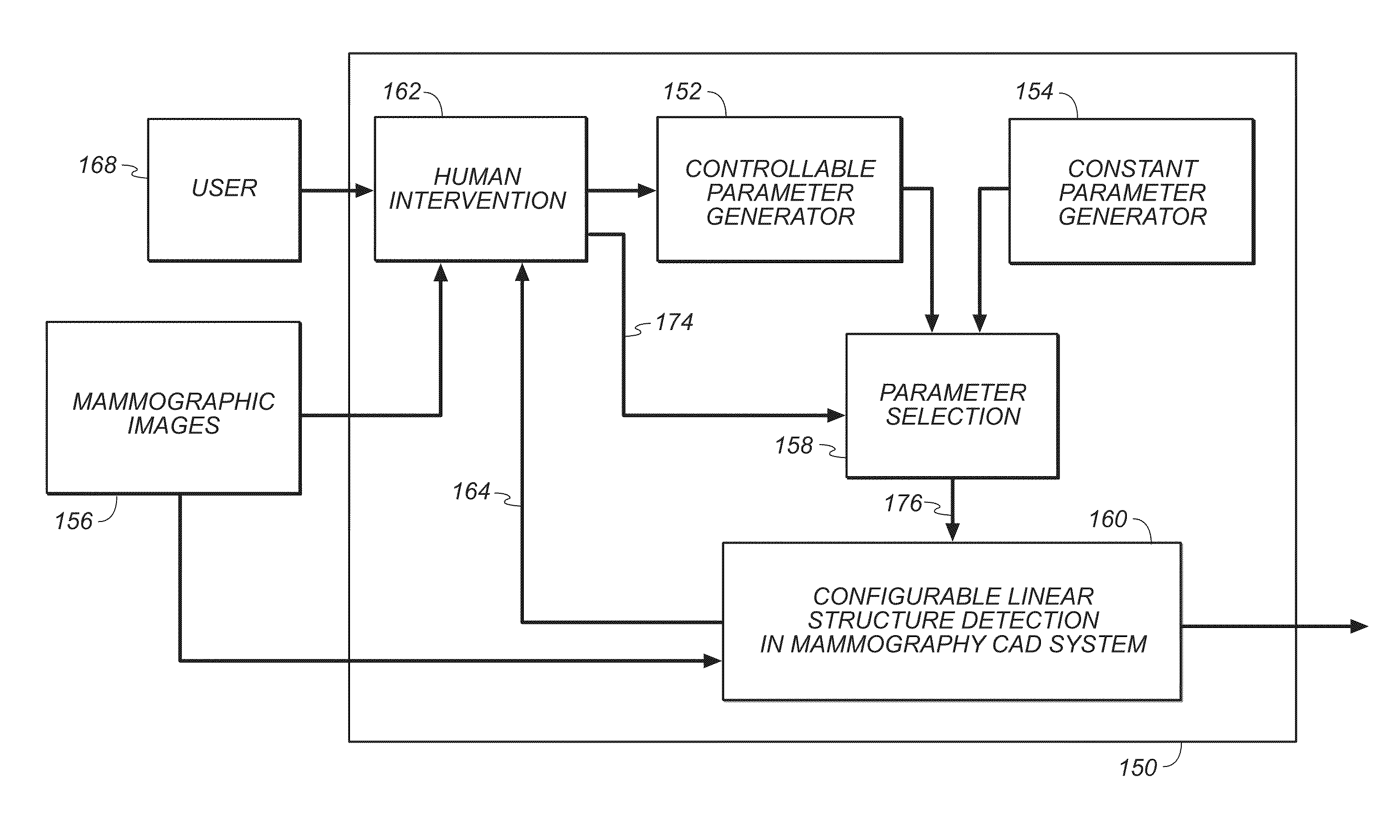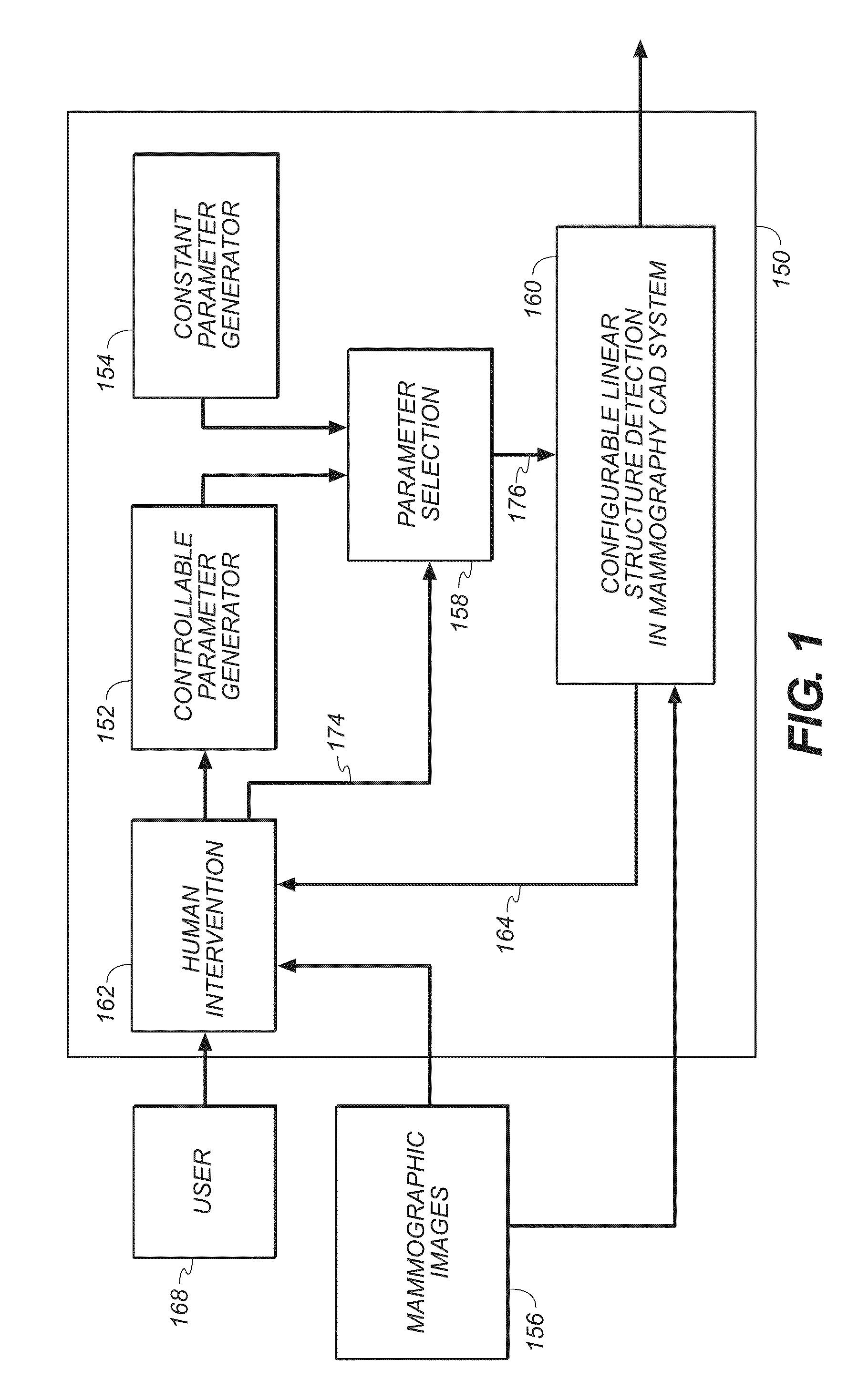Method for detection of linear structures and microcalcifications in mammographic images
a linear structure and mammography technology, applied in the field of image processing, can solve the problems of high rate of unnecessary biopsies, high cost of analyzing mammography, and inability to detect linear structures and microcalcifications, and achieve the effect of reducing mcc fps
- Summary
- Abstract
- Description
- Claims
- Application Information
AI Technical Summary
Benefits of technology
Problems solved by technology
Method used
Image
Examples
Embodiment Construction
[0043]The following is a detailed description of the preferred embodiments that use the current invention, reference being made to the drawings in which the same reference numerals identify the same elements of structure in each of the several figures.
[0044]Where they appear in the present disclosure, the terms “first”, “second”, and so on, do not necessarily denote any ordinal or priority relation, but may be used for more clearly distinguishing one element or time interval from another.
[0045]In FIG. 1, the method of the present invention will be outlined. FIG. 1 is a work flow chart 150 illustrating an embodiment that employs the linear structure detection method of the present invention. There are many variations in appearance of linear structures in mammograms in terms of contrast, brightness, texture and morphological shapes, among others. Therefore, in a practical image processing system it is desirable, as one measure, to synergistically integrate the skills of the human oper...
PUM
 Login to View More
Login to View More Abstract
Description
Claims
Application Information
 Login to View More
Login to View More - R&D
- Intellectual Property
- Life Sciences
- Materials
- Tech Scout
- Unparalleled Data Quality
- Higher Quality Content
- 60% Fewer Hallucinations
Browse by: Latest US Patents, China's latest patents, Technical Efficacy Thesaurus, Application Domain, Technology Topic, Popular Technical Reports.
© 2025 PatSnap. All rights reserved.Legal|Privacy policy|Modern Slavery Act Transparency Statement|Sitemap|About US| Contact US: help@patsnap.com



